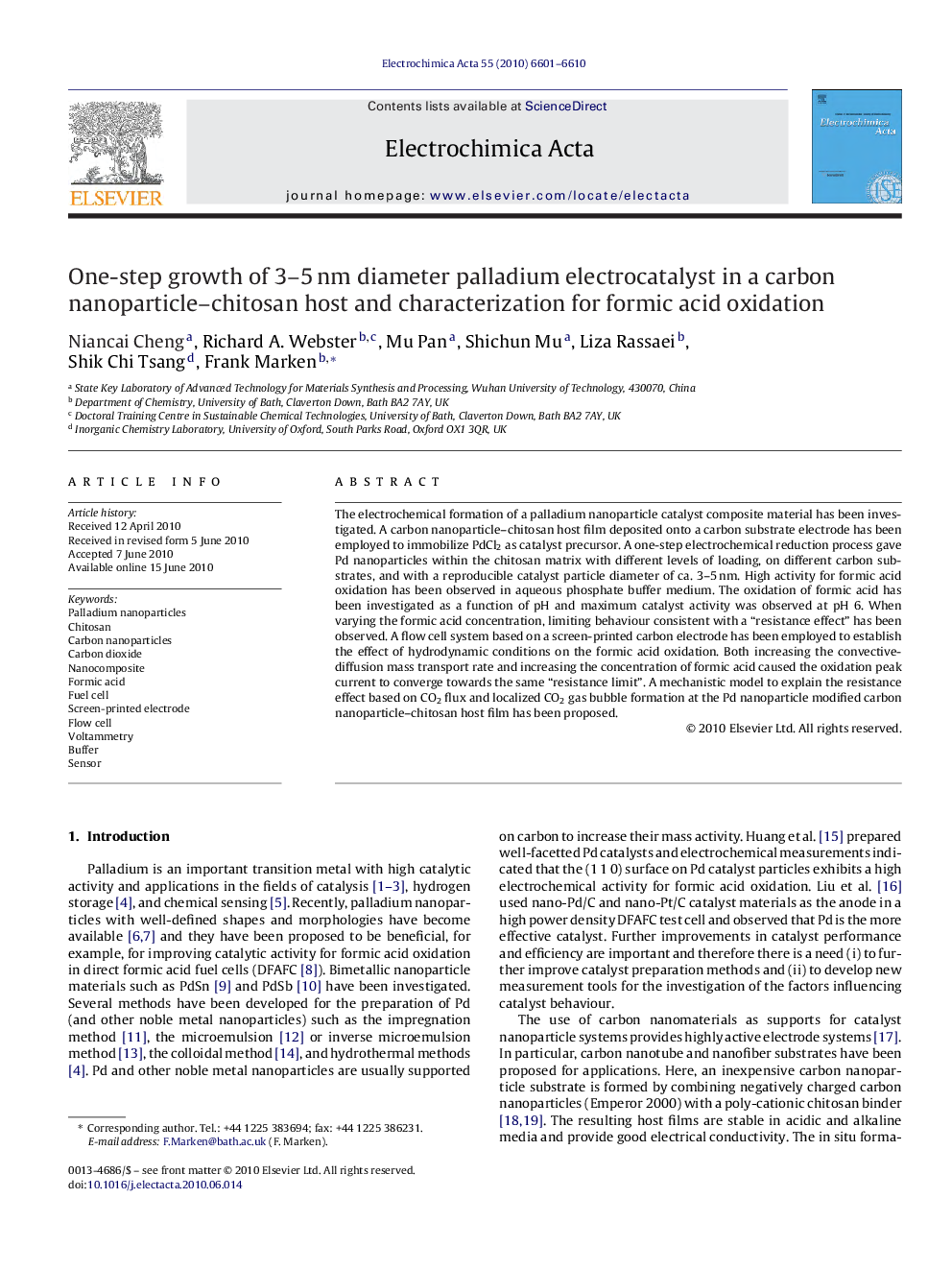| Article ID | Journal | Published Year | Pages | File Type |
|---|---|---|---|---|
| 192214 | Electrochimica Acta | 2010 | 10 Pages |
The electrochemical formation of a palladium nanoparticle catalyst composite material has been investigated. A carbon nanoparticle–chitosan host film deposited onto a carbon substrate electrode has been employed to immobilize PdCl2 as catalyst precursor. A one-step electrochemical reduction process gave Pd nanoparticles within the chitosan matrix with different levels of loading, on different carbon substrates, and with a reproducible catalyst particle diameter of ca. 3–5 nm. High activity for formic acid oxidation has been observed in aqueous phosphate buffer medium. The oxidation of formic acid has been investigated as a function of pH and maximum catalyst activity was observed at pH 6. When varying the formic acid concentration, limiting behaviour consistent with a “resistance effect” has been observed. A flow cell system based on a screen-printed carbon electrode has been employed to establish the effect of hydrodynamic conditions on the formic acid oxidation. Both increasing the convective-diffusion mass transport rate and increasing the concentration of formic acid caused the oxidation peak current to converge towards the same “resistance limit”. A mechanistic model to explain the resistance effect based on CO2 flux and localized CO2 gas bubble formation at the Pd nanoparticle modified carbon nanoparticle–chitosan host film has been proposed.
